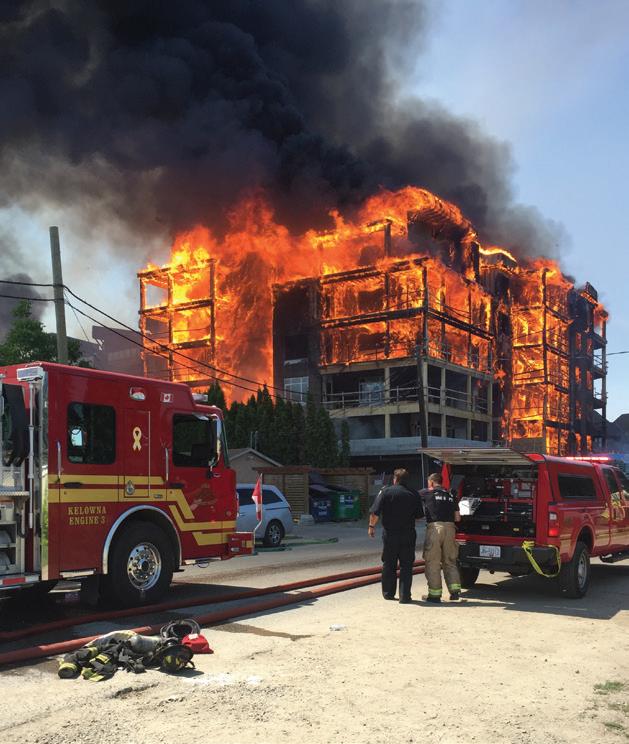
4 minute read
REGIONAL EMERGENCY PROGRAM
Travis Whiting, COORDINATOR
The Regional Emergency Program is coordinated by the City of Kelowna Fire Department on behalf of the Regional District, the cities of Kelowna and West Kelowna, districts of Lake Country and Peachland and the Westbank First Nation. The plan makes provisions for the community in the event of any emergency such as flooding, forest fires, or other catastrophes that impact our residents.
What We Do…
Officials from each local government, work with many other agencies, including the RCMP, fire departments, BC Ambulance, Interior Health, School District 23, public works, transportation, communications and Emergency Support Services (ESS) volunteers. These group regularly meet and practice the plan, which also includes activating the Emergency Operations Centre (EOC) in the main Kelowna fire hall.
The Emergency program provides information during incidents to residents and media through Twitter (twitter.com/CO_ Emerg) and Facebook (www.facebook.com/CORDEmergency). Residents may also subscribe to emergency notifications and find real time updates at the CORD Emergency website: www. cordemergency.ca
The plan also provides guidelines for recovery operations after any emergency or disaster ends.
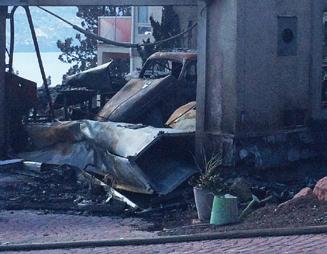
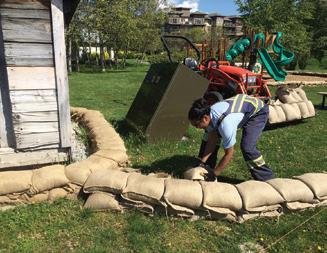
2017 Highlights
¢ The Regional Emergency Program coordinated and hosted ongoing training courses and workshop sessions for over 100 local government staff involved in Emergency Management.
¢ In early March, the Information Office provided a news release encouraging Central Okanagan residents in low-lying and flood prone areas to make annual preparations for the possibility of flooding. There was no indication at this point that within a few months the Okanagan would see record lake water levels and associated flooding.
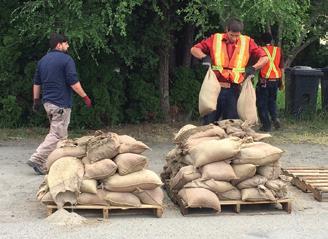
¢ Leading up to Emergency Preparedness Week May 7-13 the Information Office issued a new release and social media posts to encourage Central Okanagan families to subscribe to receive email notifications from the Emergency program website and to follow the three steps to Emergency Preparedness: Know the Risks, Make A Plan and Get an Emergency Kit.
¢ The Emergency Operation Centre was activated on May 5 to support first responders throughout the Central Okanagan for localized flooding. This flood response continued well into late August for recovery efforts, to deal with the unprecedented and record setting levels of lakes in the region. Several fires kept the Emergency Operation Centre operating until September 11 – a period of 127 straight days.
¢ From the early May activation until August 14, 140 floodrelated news releases were issued along with hundreds of social media posts.
¢ On July 8 and 9, the Emergency Operation Centre supported the City of Kelowna Fire Department responding to the massive Truswell Road structure fire involving the Water’s Edge condominium which was under construction. 176 units in a nearby building were evacuated.
¢ July 15-27, saw the EOC at a Level Three activation supporting the District of Lake Country as it responded to the 55-hectare Okanagan Centre wildfire. While destroying eight homes and outbuildings, actions of fire crews from departments across the region and BC Wildfire Service helped save hundreds of others. Over 330 properties were evacuated and more than 650 were on alert at the height of the blaze.
¢ Another Level Three Activation occurred from August 24 through September 7, as the Philpott Road wildfire swept through several Joe Rich neighbourhoods, off Highway 33. While growing to consume an area of 465-hectares and forcing more than 1,100 people from their homes, thanks to the work of the Joe Rich and many other fire departments from the Central, North and South Okanagan and air and ground crews from the BC Wildfire Service, no structures were lost.
» The longest continuous stretch that the ESS Reception Centre was open and staffed by volunteers was 82 days.
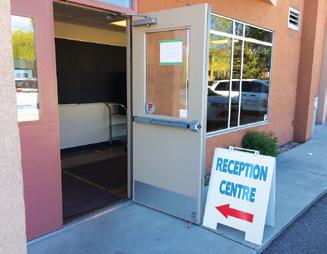
» In addition, ESS reception centre supported approximately 1500 people who were evacuated by wildfires across the Thomson-Nicola and Cariboo regional districts.
Over 330 properties were evacuated on July 15-27 due to the 55-hectare Okanagan Centre wildfire.
2018 Initiatives
¢ A review of 2017, including updates to Operating Guidelines and incorporation of lessons learned will continue into early 2018 to ensure the EOC is ready again for potential events next year.
¢ Replacement of core technical equipment and updating of technology will provide enhancements to the EOC
¢ Continue to work with staff from local governments across the region on training and preparedness in advance of the Spring Freshet (flooding) season and wildfire season.
¢ September 2-11, the Finlay Creek wildfire saw the EOC issue Evacuation Alerts as a precaution affecting over 300 properties in the south section of Peachland and Brent Road area of the Regional District Central Okanagan West Electoral Area. Most of the growth in this 2,200-hectare wildfire was to the south, outside the Central Okanagan and into the Regional District of Okanagan-Similkameen.
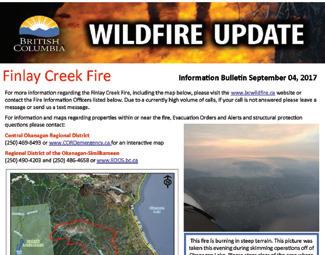
¢ Prepare and commence review and updating of Central Okanagan Regional Hazard, Risk and Vulnerability Analysis, Emergency Response Procedures and Emergency Program Bylaw.
Additional Information Evacuation Stages
Evacuation Alert - The alert highlights the nature of the danger and that people should be prepared to evacuate the area with short notice. The Evacuation Alert may allow for the population at risk to begin an orderly preparation to voluntarily leave the affected area.
Evacuation Order - The population at risk is ordered to immediately evacuate a specified area defined by the Evacuation Order. While the evacuation order is in effect, the area will have controlled and restricted access.
Rescind - The population at risk is allowed to return to the area previously evacuated, having been advised that the danger has passed. There is the possibility that the danger may reoccur and the Evacuation Alert may need to be upgraded or Evacuation Order might need to be reissued or reinstated.
Emergency Operation Centre Activation Levels
¢ The Regional ESS (Emergency Support Services) program was very active during 2017. There were over 30 events where these dedicated volunteers came together to support over 3,000 residents who were evacuated from disasters including flooding, house and apartment fires and wildfires.
Level One – small event, one site
Level Two – medium event, two or more sites with limited evacuations
Level Three – major event involving multiple sites and extensive evacuations




